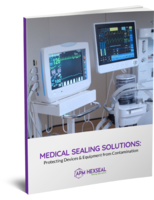New AccuWound 96 Tool Simultaneously Generate Identical Scratch Wounds
Press Release Summary:
AccuWound 96 Tool integrated with monitors the closure of wounds in real-time using ACEA’s xCELLigence instrument. Delivering migration data with quality and reproducibility with coefficients of variation ~4% vs. ~20%, unit drags the spring-loaded Teflon tipped stainless steel pin across bottom line. The tool is used in processes such as wound healing, angiogenesis and embryonic development.
Original Press Release:
Novel Assay Monitors Kinetics of Cell Migration in High Throughput Format
While new AccuWound tool generates 96 identical scratch wounds in just seconds, wound healing is subsequently monitored in real-time by xCELLigence instrument, yielding cell migration kinetics with unprecedented ease and reproducibility
SAN DIEGO (PRWEB) APRIL 27, 2018
Today ACEA Biosciences, a pioneer of instrumentation for cell-based assays, announced the launch of AccuWound 96, a tool which simultaneously generates identical scratch wounds in every well of a 96-well plate. This mechanical device drags a spring-loaded Teflon™-tipped stainless steel pin across the bottom of each well with extreme precision, thereby eliminating the variability and extensive hands-on time associated with manually producing scratch wounds one well at a time. The closure of these wounds, which provides an assessment of cell migration behavior, is subsequently monitored in real-time using ACEA’s xCELLigence instrument. This combination of AccuWound 96 with xCELLigence yields migration data of unrivaled quality and reproducibility, with coefficients of variation that are ~4% vs. ~20% using traditional methods.
Cell migration and invasion are critical to many facets of biology, including such diverse processes as wound healing, angiogenesis, embryonic development, and the intravasation and extravasation of cancer cells during metastasis. The traditional scratch assay/wound healing assay, a staple for cell migration studies, typically involves manually dragging a pipette tip across the bottom of a well in order to remove a central region of cells from a confluent monolayer, and then periodically taking photos to track the closure of this “wound.” Besides the tedious, variable, and low throughput nature of manually producing such scratch wounds, this traditional approach yields mere snap shots of the cell migration process. “Although xCELLigence instruments provide a much more information-rich kinetic readout of wound healing, they do not by themselves address the problems associated with producing the scratch wounds. By simplifying the workflow and improving both throughput and reproducibility, the AccuWound 96 scratch tool overcomes these deficiencies,” stated Xiaobo Wang, ACEA’s Chief Technology Officer.
It is worth noting that ACEA’s new scratch wound healing assay is an orthogonal approach to their cell invasion & migration (CIM) device, developed in 2009, which is essentially an electronic Boyden chamber that enables chemotactic migration/invasion to be studied in real-time using the xCELLigence instrument. Together, the new AccuWound-mediated scratch assay and the CIM plate make it possible to address a broad set of similar, yet different, questions. While an advantage of the CIM device is that it captures the kinetics of migration within the context of a chemotactic gradient, an advantage of the scratch assay is that it can uniquely monitor cell sheet migration – where cells remain tightly associated with their neighbors while migrating en masse.
Collectively, ACEA’s xCELLigence instruments and auxiliary tools now enable a complete repertoire of cell migration and invasion assays to be conducted in real-time and with substantially improved workflow and data quality. Click here to learn more about the AccuWound 96 scratch tool, the cell invasion/migration (CIM) device, or xCELLigence instruments.
About xCELLigence® RTCA
xCELLigence® Real Time Cell Analysis (RTCA) instruments utilize gold biosensors embedded in the bottom of microtiter wells to non-invasively monitor the status of adherent cells using the principle of cellular impedance. In short, cells act as insulators – impeding the flow of a miniscule electric current between electrodes. This impedance signal is measured automatically, at an interval defined by the user, and provides an extremely sensitive readout of cell number, cell size, cell-substrate attachment strength, and cell invasion/migration. xCELLigence® RTCA instruments are being used in both academia and industry for basic and applied applications ranging from cancer immunotherapy and cardiotoxicity to drug discovery and viral titer determination. To date xCELLigence® has been used in more than 1,400 publications, which can be viewed in a searchable library.
About ACEA Biosciences
Founded in 2002, ACEA Biosciences is a pioneer in the development and commercialization of high performance, cutting edge cell analysis platforms for life science research. ACEA’s xCELLigence® impedance-based, label-free, real-time cell analysis instruments and NovoCyte® flow cytometer are used in pre-clinical drug discovery and development, toxicology, safety pharmacology, and basic academic research. More than 2,000 instruments have been placed globally.
For more information visit http://www.aceabio.com.
For further information please contact:
ACEA Biosciences, Inc.
Dr. Jeff Xue
Phone: 858-299-8023
email: jxue(at)aceabio(dot)com




